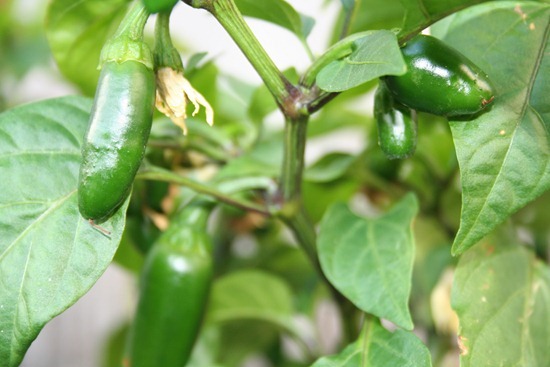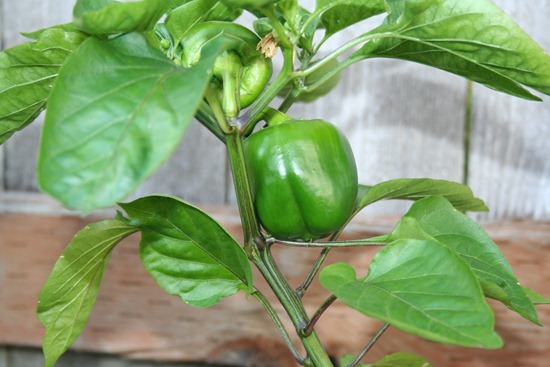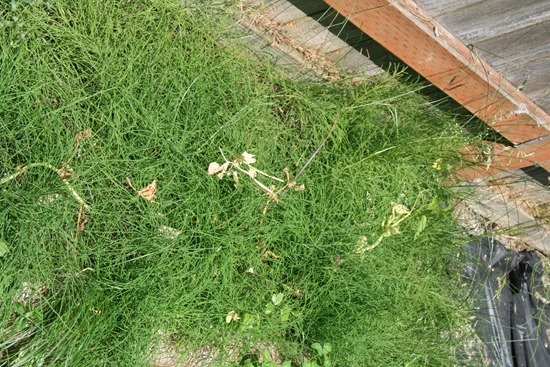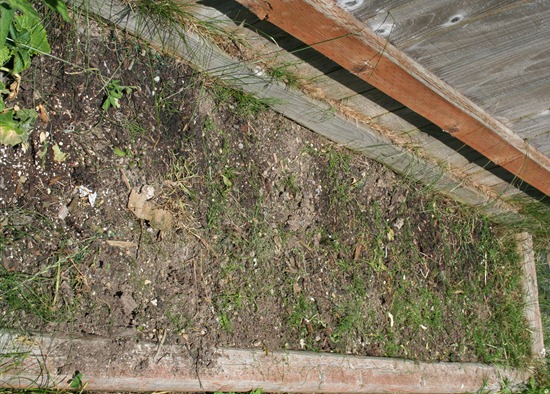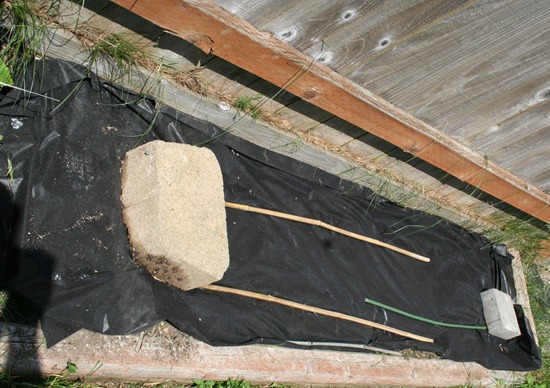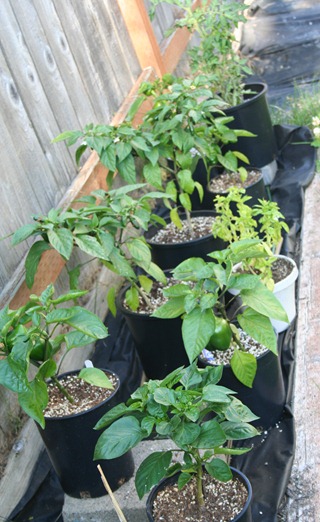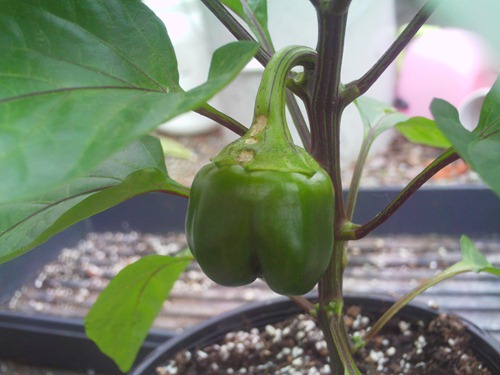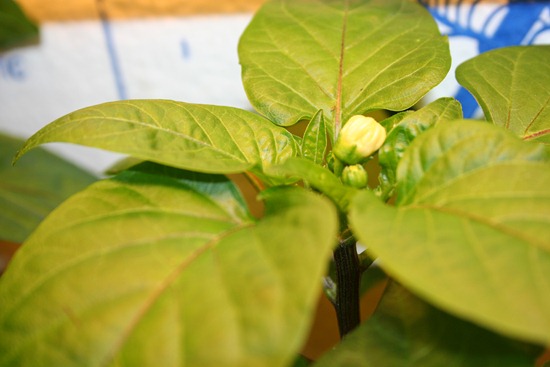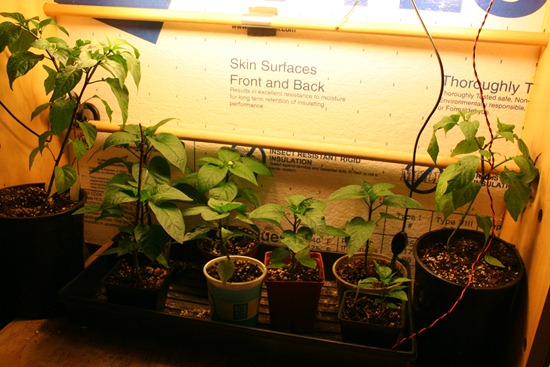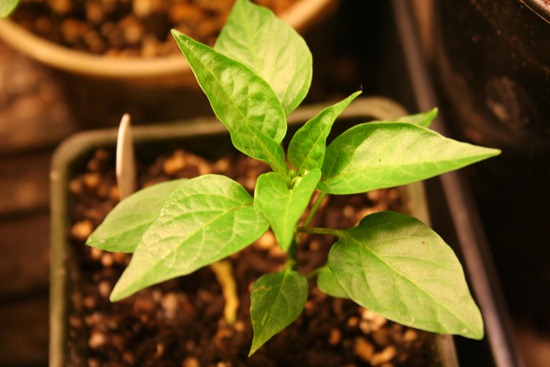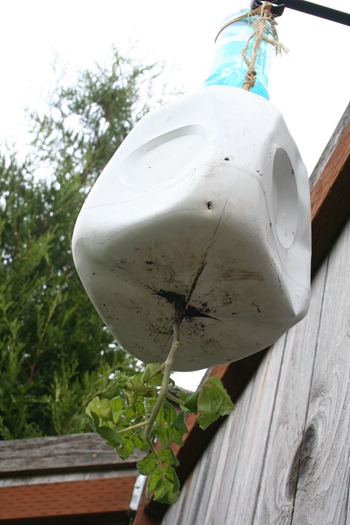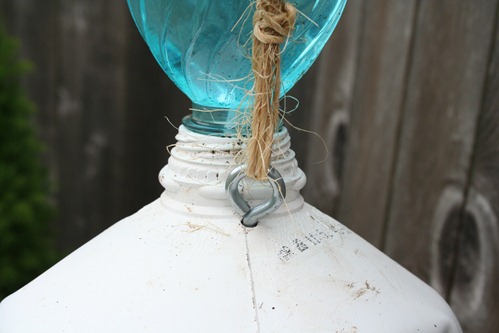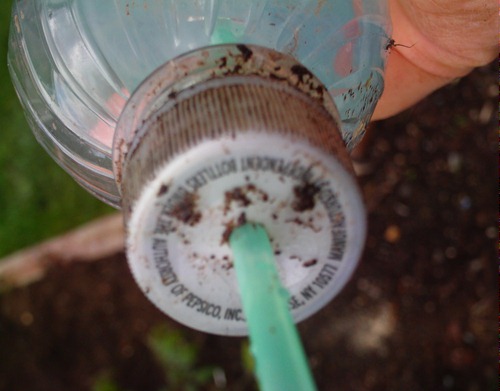How to make jalapeno pepper powder
13.8 years ago dehydrator, jalapeno, peppers, Uncategorized
Other than gardening I also enjoy cooking manly foods such as chili and BBQ rubs. One seasoning I have heard being used for both recently was jalapeno pepper powder. Not seeing any in local stores and having an abundance of jalapeno peppers in my garden I decided to attempt to make my own.
1. First picked some nice green jalapeno peppers from my garden, I chose to use young green ones but you could also use more ripe red ones for a different and less spicy flavor.
2. Next I cut the ends off the pepper, split them in half, and removed any seeds. After a little trial and error I noticed that if I cut perpendicular to the line in the middle of the pepper (see below) it was much easier to remove the seeds
3. I then placed the halved peppers in a plastic tray and put them in my dehydrator at 90F for 24 hours until they were brittle (when you break them in half they snap with minimal bending) with no soft or moist areas.
Tip: For difference flavor you can dehydrate at a higher temperature to roast/cook them a little but you will lose some of their heat.
4. Place your dried peppers into a blender or spice grinder and pulse until they create a fine powder.
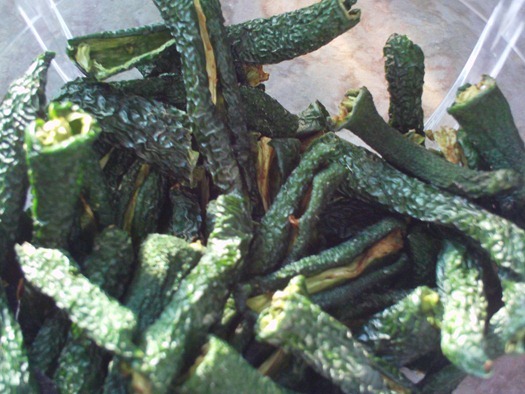
Be sure to let the powder settle some and be careful to not inhale the powder, though much less heat then some of its pepper cousins (see chart below) getting a nose full of jalapeno pepper powder is not a pleasant experience (I did try this not too painful, though should have a nice little coughing fit).
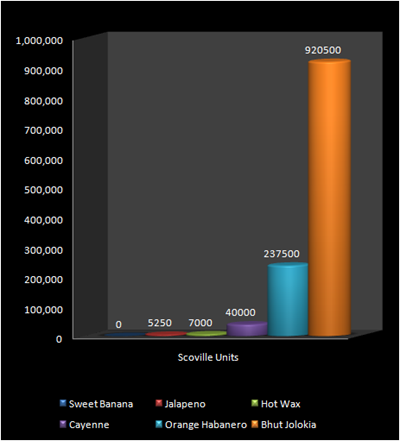
5. Finally carefully pour powder into a airtight container and store for 6-12 months.
As I mentioned above you can use this in meat rubs and chili but also can be used anywhere you may use other pepper powders. Some ideas I am thinking about is complement to Mexican foods, omelets, popcorn, and potatoes.
More Early peppers
13.8 years ago jalapeno, peppers
The tomatoes have been lacking this year though the peppers are still doing great.
Under normal circumstances this would make no sense at all but the secret with this success is the two months this summer these peppers have been spending in the grow box with their perfect temperature and lighting conditions…otherwise there is little hope for me growing peppers in my short season here in the Pacific Northwest.
Serious weed control
13.8 years ago peppers, weed prevention, weeds
I have been having a losing battle with cattails for the past couple years. This was what was lurking under my snow peas after I pulled them out. The problem with cattails is they do not emerge until the temperatures increase and given their broad root structure trying to remove them will most likely kill the plants (in this case peas) surrounding them.
If you attempt to pull cattails not only will you not kill them but this disturbance will actually encourage more growth. There are a couple of techniques to stop these evils weeds, first is instead of pulling them cut them at the base, second it to shade them. I decided to attack these weeds using both techniques.
Step 1: Chop weeds to their base. I used some scissors to cut down all of the cattails at their base.
Step 2: Covered the weeds. I used black plastic to smother the weeds. Not only will this smother the weeds but also bake the soil to kill any bacteria/fungus (or any other weed seeds) to hopefully end up with a moderately sterile soil when I plant next year.
Not to waste any of my very limited space in my garden, I moved my peppers and one tomato plants to this location.
Tags: pepper
First pepper of the year
13.9 years ago peppers
It has been slow to warm up this year but finally getting some warm enough nights to bring my peppers outside for a little while. Though they were flowering in the grow box I was surprised to see a sweet yellow pepper already growing. This is definitely a record for me by at least a good month.
Tags: pepper
Growing Pepper Plants Indoors
14 years ago Bhut Jolokia, indoor growbox, jalapeno, peppers
Pepper plants need specific environmental (temperature and humidity) conditions to establish growth and create high yields. If the temperatures get too low it will stunt its growth or not produce blossoms, when the temperatures get too high the plant will drop it blossoms resulting in no or reduce yields.
The perfect temperature range for peppers is between 70 and 80 degrees F for Bell peppers and hot peppers can handle a little warmer temperatures up to 85 degrees. If their environment gets below 70 degrees the plants will struggle, which given even in August we don’t hit an average of 70 degrees F for any success a greenhouse, hot box, or a growbox is requirement. If you are a frequent reader of this site you probably already know I go with the last option.
With a few CFLs (or incandescent if extra heat is needed) the peppers plants are happy in the growbox. With exception of once a week watering with a diluted fertilizer at 50% recommended on the box they pretty much take care of themselves. If we do get a nice warm day I will bring them out for some natural light. This also invites some natural organic pest control of any aphids which may have found their way into the growbox. When the plants begin flowering this also gives some bees an opportunity to do a little pollination, this can be done by hand with a paint brush or Q-Tip though my success rate is much less than the bees, though they have been doing this for millions of years…I am still a little new at this
As mentioned above controlling the proper temperature is critical, I do this with a combination of computer controlled fans and lighting to maintain the proper temperature, though this could also be achieved by using a $10 outdoor digital thermometer and a occasional adjustments to venting or fan control to maintain a good temperature range.
Last year I only grew jalapeno pepper plants, but this year I am also trying Cayenne, Sweet Yellow, and Bhut Jolokia pepper plants. Though it is quite a bit more work growing peppers in my area, I like challenges and to do things that others say can not be done, call me stubborn.
Tags: growbox
1 Gallon Milk carton upside down tomato planter
14 years ago cheap, peppers, tomato, upside down planter, water
I wanted to see if (how much) my yields varied by allowing more volume of dirt in my homemade tomato planter, so I made this variation with the same type and size “Husky Cherry” seedling I am using in my 2-liter planter version.
The build for this one is also very simple:
- I started with an organic milk carton given it was already opaque, but if you have the non-organic variety you will want to paint or cover the outside with duct tape.
- Next cut or drill a 1/2 inch hole on the bottom of the milk carton, this will be where the stem of the plant will fit through.
- Cut four slits out from the center of the 1/2 inch hole to make it easier to insert the plant into the planter.
- Insert plant through the bottom.
- Fill with soil (mix of 1 part peat moss/coconut coir)
- Finally drill a hole and feed though eyelet secured with a nut from the back side
Now here is where you can stop or you can go with the advanced auto-watering option.
Materials Needed:
- 20 ounce water bottle
- plastic straw
- sponge
Build Instructions:
- Drill hole just large enough to barely be able to pull the straw through
- Cut a 1 inch long piece of sponge just wide enough to be able to slip inside the straw.
- Fill with water and screw on cap and insert into top of planter
As the dirt dries it will also dry out the sponge which will release water and repeat as necessary. This works in a very similar concept as a Aqua Globe you may have seen advertised on TV.
Tags: cheap, garden seeds, organic vegetables, outdoor plants, tomato plants, upside down tomato planter, vegetables

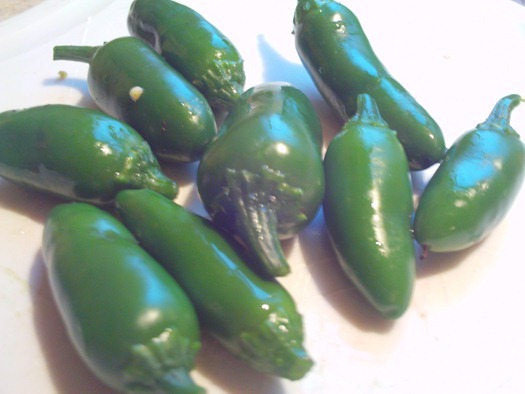
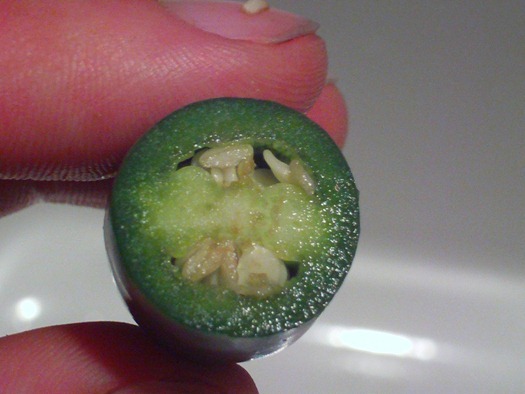
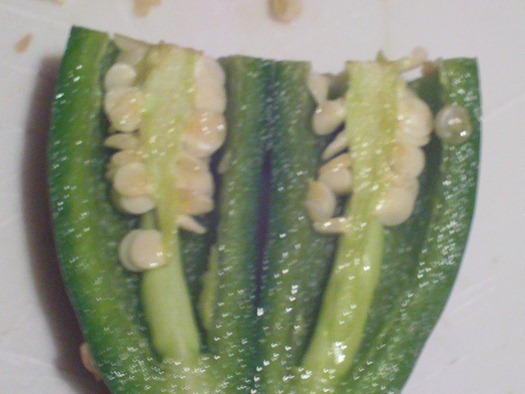
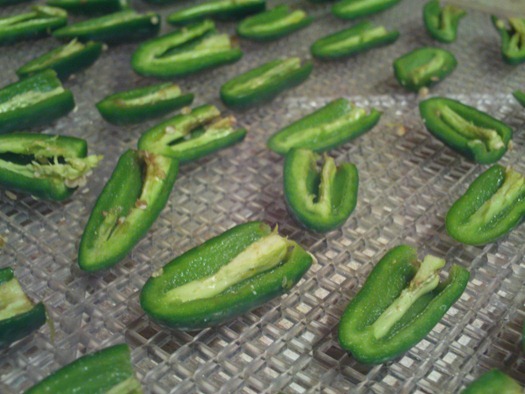
![009[5] 009[5]](http://www.cheapvegetablegardener.com/wp-content/uploads/2010/08/0095_thumb.jpg)
